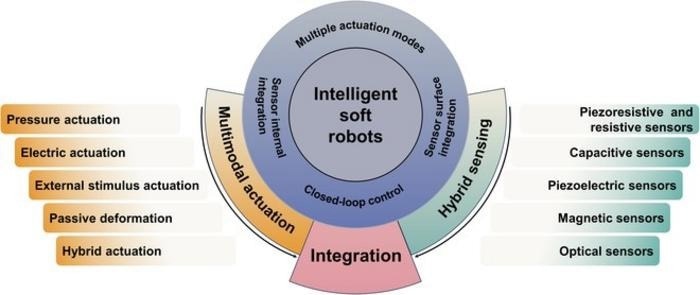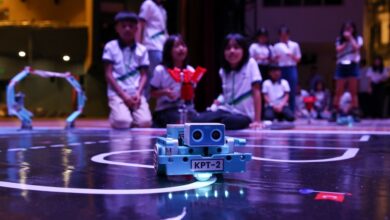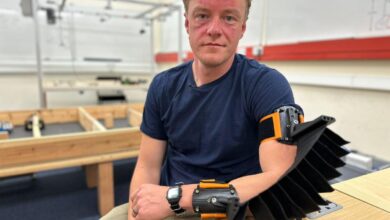Integrating Sensing and Actuation Technologies within Soft Robots

In a recent study published in Cyborg Bionic Systems, a team of researchers from Southeast University led innovative research that combines sensing—which involves gathering environmental data—and actuation—the capacity to move and interact with surroundings. This integration is required to develop soft robots that can respond and adjust to their environment independently.
The emergence of soft robotics, which provides unmatched flexibility and adaptability in various applications (from complex rescue operations to medical interventions), is causing a revolutionary shift in robotics. It emphasizes the critical integration of actuation and sensing technologies, which will pave the way for intelligent soft robots.
Unlike their rigid counterparts, soft robots can move and adapt with a life-like. This is because they are constructed from materials that mimic the mechanical properties of living tissues. They are ideal for operation in unstructured and unpredictable environments where traditional robots might struggle.
Thanks to advancements in actuator technologies, soft robots can carry out various tasks, including handling objects delicately and navigating uneven terrain. These robots can also perceive their surroundings using sensing technologies, which enable them to identify obstacles and evaluate the characteristics of the objects they interact with. By combining these two abilities, soft robots can conduct complex tasks more autonomously and effectively.
Zhou et al. examine various actuation techniques, such as electrically driven, pressure-driven, and shape memory material-based approaches. These techniques have enabled soft robots to perform intricate movements like bending, crawling, and rotation. Regarding sensing, the researchers investigate developments in haptic (touch-based) and proprioceptive (self-perception) sensing, which allow robots to recognize their body positions and respond to physical contact.
The review provided a comprehensive evaluation of three integration techniques for actuation and sensing:
- Sensor Surface Integration: Embedding sensors on the robot’s exterior to give it real-time feedback on its interactions with the outside world.
- Sensor Internal Integration: Integrating sensors within the robot’s body to monitor internal states enhances its capability to adapt movements based on dynamic internal and external conditions.
- Closed-loop System Integration: This technique uses sensor feedback to build systems where sensing and actuation continuously inform and improve one another’s performance.
The review notes that, despite the encouraging developments, the field still faces several obstacles. These include the requirement for more robust and dependable integration methods, the development of materials resistant to various operational conditions, and the creation of increasingly complex models for robot behavior prediction and control.
The research team has proposed several future directions for these robots, including increasing their load capacity, optimizing their energy efficiency, and further developing the technologies that enable them to function in harsh environments. These advancements have the potential to completely change the applications of robots in industries like deep-sea exploration, emergency preparedness, and medical services.
The review by Zhou et al. calls for researchers to take immediate action and provides an overview of the state of soft robotics today. As this field evolves, it promises to develop robots that are not only more adaptable and safe for human interaction but also capable of performing tasks that are currently unimaginable.
Journal Reference:
Zhou, S., et al. (2024) Integrated Actuation and Sensing: Toward Intelligent Soft Robots. Cyborg Bionic Systems. doi.org/10.34133/cbsystems.0105
Source:



